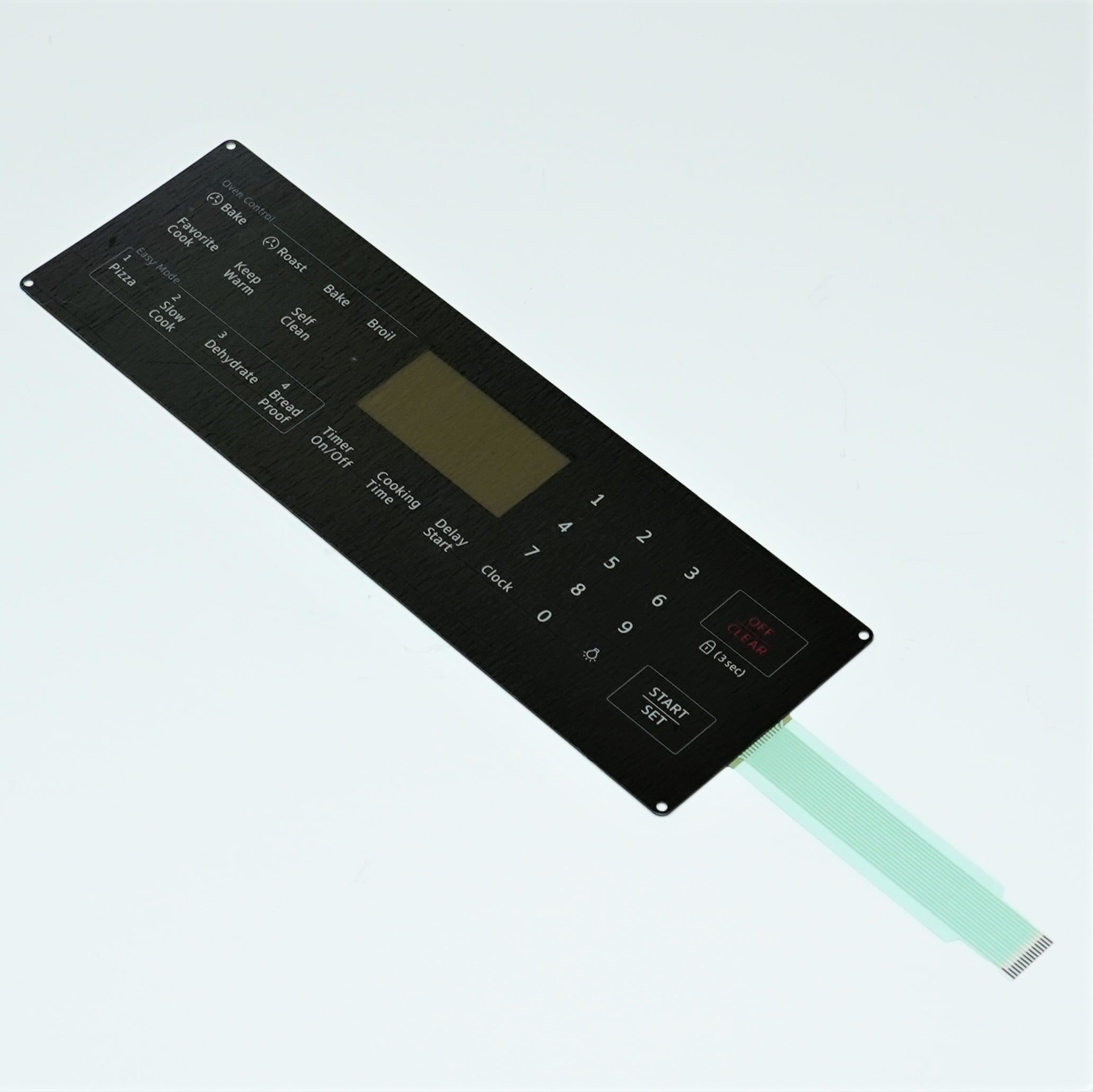Top Features to Look for in a High-Quality Membrane Switch
Top Features to Look for in a High-Quality Membrane Switch
Blog Article
Recognizing Membrane Changes: The Trick to Durable and Trustworthy Controls

What Are Membrane Layer Switches?
Membrane layer switches are an advanced option in the world of interface innovation, incorporating capability and layout seamlessly. These devices work as an interface in between individuals and electronic systems, integrating several parts right into a portable format. Normally constructed from flexible, slim layers of products, membrane layer switches are made to react to touch, allowing customers to engage with equipment and electronic devices successfully.
The primary aspects of a membrane layer button consist of a published circuit layer, visuals overlay, and a spacer layer that avoids unexpected activation. The graphic overlay can be customized to show brand identification or individual preferences, improving aesthetic appeals while ensuring functionality. Membrane layer switches are generally utilized in different applications, including medical devices, consumer electronics, and commercial tools, owing to their sturdiness and resistance to ecological aspects such as dampness and dirt.
Among the crucial advantages of membrane buttons is their capacity to hold up against wear and tear, making them suitable for high-traffic atmospheres. Furthermore, they are light-weight and require minimal space, enabling cutting-edge designs in item development. On the whole, membrane switches over represent a efficient and useful option for modern electronic user interfaces, weding innovation with user-centric design principles.
Exactly How Membrane Layer Switches Over Job
The procedure of membrane changes joints on a simple yet efficient system that converts user input into digital signals. When a customer presses the button, the top layer warps, enabling a conductive component in the circuit layer to make contact with a corresponding conductive pad on the underside of the visuals overlay.
The layout of membrane layer switches can vary, however they usually incorporate domes or tactile aspects to provide responses to the individual, enhancing the overall experience - membrane switch. The products made use of in membrane switches, such as polyester or polycarbonate, add to their longevity and resistance to ecological factors, including moisture and dust. Additionally, the printed circuits are normally enveloped, which shields them from damage with time.
Advantages of Membrane Layer Buttons

Additionally, membrane switches are understood for their longevity. Created from robust materials, they are resistant to dust, dampness, and physical wear, which substantially expands their life-span contrasted to traditional mechanical switches. This resilience makes them especially appropriate for high-traffic atmospheres and applications needing durability.
An additional substantial advantage is the convenience of cleansing and upkeep. The smooth surface area of internet membrane changes index reduces dust build-up and is commonly unsusceptible spills, making them excellent for setups that call for constant sanitization.
In addition, membrane layer buttons use a structured profile, resulting in a thinner design that can be integrated right into numerous tools without including bulk. This feature not only enhances the visual allure yet likewise contributes to a more ergonomic product layout.
Applications of Membrane Layer Buttons
User-friendly and functional, membrane layer switches locate applications throughout a variety of sectors, including medical tools, customer electronics, and commercial devices. In the medical area, these switches are integral to gadgets such as diagnostic tools, individual monitoring systems, and mixture pumps, where reliability and convenience of cleaning are critical. Their capacity to keep and endure rough discover here atmospheres capability makes them suitable for such applications.

In customer electronics, membrane buttons are used in products like microwaves, cleaning machines, and remotes - membrane switch. Their sleek style allows for user-friendly interface, enhancing the general customer experience while providing toughness and resistance to tear and use
Commercial equipment likewise gains from membrane switches, specifically in control panels for machinery and automation systems. These switches provide security versus dirt and moisture, making sure regular efficiency in challenging environments. Their adjustable attributes permit manufacturers to tailor them to certain functional requirements, boosting performance and capability.
Picking the Right Membrane Layer Switch
When selecting a membrane switch, it is necessary to take into consideration various factors that influence performance and suitability for specific applications. The key factors to consider include environmental conditions, tactile feedback, resilience, and layout specs.
First, examine the operating atmosphere; switches subjected to dampness, chemicals, or severe temperatures require particular materials to make sure longevity and capability. Next off, examine the need for responsive comments. Depending upon individual communication, some applications may gain from a responsive reaction to confirm activation, while others might choose a non-tactile design for visual reasons.
Resilience is another critical aspect; membrane buttons ought to be designed to hold up against regular usage, effects, and abrasion. Guarantee the picked switch can sustain the expected lifecycle, especially in high-usage situations.

Conclusion
In final thought, membrane layer switches serve as essential elements in the style of durable and trustworthy control systems throughout various markets. The adaptability of membrane layer switches enables for customized solutions that satisfy details operational needs, strengthening their significance in modern innovation.
Membrane layer switches stand for a critical aspect of contemporary user interface layout, mixing performance with resilience in different applications.Membrane buttons are an advanced option in the world of customer interface innovation, incorporating functionality and layout seamlessly. Normally created from adaptable, slim layers of products, membrane layer buttons are made to react to touch, making it possible for customers to connect with equipment and digital gadgets successfully.
The style of membrane layer switches can vary, but they frequently incorporate domes or tactile elements to provide responses to the customer, boosting the general experience.In final thought, membrane switches offer as crucial parts in the style of trustworthy and long lasting control systems across various sectors.
Report this page